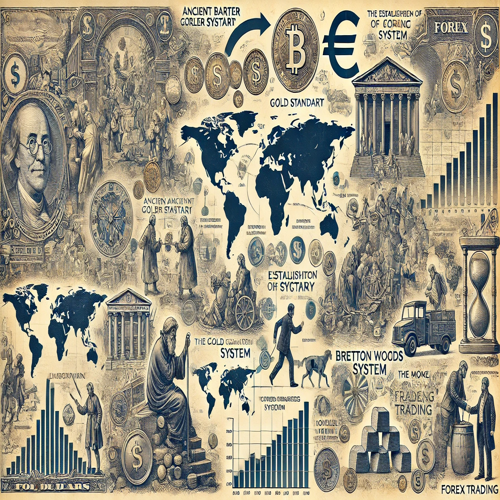
How Forex Started? Forex History. Bretton Woods Agreement
Forex History. How Forex Started? Who is the First Person to Trade Forex? Bretton Woods Agreement
First of all for Forex History, during the development of the barter economy, it was quite common to exchange goods by matching their values. Over time, however, money was invented to make trade more efficient and practical. The invention of money was an important detail in determining the value of goods and made trade easier and accepted by everyone.
However, in trade between countries, the fact that each country’s currency was different led to the need to determine the value of these currencies in relation to each other. This situation formed the basis of foreign exchange trading and eventually led to the signing of the Bretton Woods Agreement. The Bretton Woods Agreement played an important role in regulating the foreign exchange market by fixing the value of currencies between countries. This event is considered a critical turning point in laying the foundations of the Forex market. First step is Bretton Woods in Forex History.
Bretton Woods Agreement (First Step in Forex History)
1-United Nations Monetary and Financial Conference: After the Second World War, 730 delegates from 44 countries, mainly the USA, England and France, met in Bretton Woods, New Hampshire, USA, to establish a new world economic order and to rebuild national economies.
2-Fixed Exchange Rate Principle: At this conference, the fixed exchange rate principle was first established. This aimed to fix national currencies at a certain value and limit fluctuations.
3- Creation of the IMF and the World Bank: The conference also decided to create the International Monetary Fund (IMF) and the World Bank. These institutions would play an important role in stabilising the world economy and promoting economic development.
4-Gold Standard: The national currencies of the countries involved in the agreement were pegged to the price of gold and began to be valued relative to the US dollar. The dollar became the only national currency convertible into gold; 1 ounce of gold was set at $35 and 1 dollar was set at 0.8887 grams of gold.
5-Monetary Shocks and Adjustments: In the case of monetary shocks, the possibility of changing the value of a country’s currency against the dollar was provided for. Devaluation and revaluation rates were limited to 10%.
6-Economic Success: This agreement was a great success in terms of economic recovery, especially in Europe and Japan. Countries emerged from the devastating effects of the war and turned to economic growth.
7-1971 and the Smithsonian Agreement: The principles of the Bretton Woods system continued until 1971. Then the Smithsonian Agreement was signed to continue the system, but this new agreement did not last as long as Bretton Woods.
Europe’s Struggle for Independence from the Dollar
The Smithsonian Agreement of 1971 was the result of Europe’s desire to become more independent of the dollar. This agreement provided for a more flexible exchange rate regime than the Bretton Woods system by allowing a wider range of currency fluctuations. Exchange rates were allowed to fluctuate by 4.5 per cent around fixed parities. Developed countries abandoned the fixed exchange rate system linked to the dollar and moved to a floating exchange rate system in which exchange rates were determined by the market. This transition laid the foundation for the floating exchange rate system that is today’s foreign exchange market.
Impact of the Internet on the Foreign Exchange Market
In the 1990s, the foreign exchange markets were more active than ever before, thanks to the flexibility provided by the floating exchange rate regime. With the introduction of the internet, people were able to buy and sell in the markets themselves, whereas previously they had to rely on intermediaries to exchange foreign exchange and get the right price. This development has made foreign exchange trading more accessible and widespread.
The Birth of the Euro and the Rise of Forex
The euro was first introduced as the European Currency Unit (ECU) in January 1999. On that date, 11 European Union countries decided to link the value of their national currencies to the euro. The European Central Bank (ECB) became the main institution implementing the European Union’s foreign exchange policy.
© 2023 Brokerscenter, All Rights Reserved.



